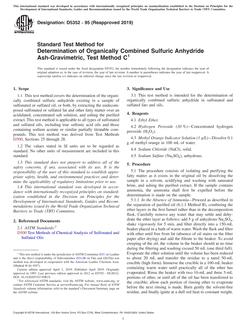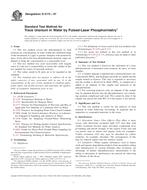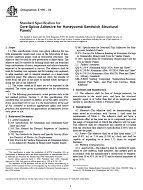1.1 This practice covers testing to evaluate chemical constituents, chemical and physical properties of compounding materials, and compounded and cured rubbers, which may frequently be conducted by one or more test methods. When more than one test method is available, two questions arise: Which test method has the better (or best) response to or discrimination for the underlying fundamental property being evaluated? and Which test method has the least error? These two characteristics collectively determine one type of technical merit of test methods that may be designated as test sensitivity.
1.2 Although a comprehensive and detailed treatment, as given by this practice, is required for a full appreciation of test sensitivity, a simplified conceptual definition may be given here. Test sensitivity is the ratio of discrimination power for the fundamental property evaluated to the measurement error or uncertainty, expressed as a standard deviation. The greater the discriminating power and the lower the test error, the better is the test sensitivity. Borrowing from the terminology in electronics, this ratio has frequently been called the signal-to-noise ratio; the signal corresponding to the discrimination power and the noise corresponding to the test measurement error. Therefore, this practice describes how test sensitivity, generically defined as the signal-to-noise ratio, may be evaluated for test methods used in the rubber manufacturing industry, which measure typical physical and chemical properties, with exceptions as noted in .
1.3 This practice does not address the topic of sensitivity for threshold limits or minimum detection limits (MDL) in such applications as (1) the effect of intentional variations of compounding materials on measured compound properties or (2) the evaluation of low or trace constituent levels. Minimum detection limits are the subject of separate standards.
This standard does not purport to address all of the safety concerns, if any, associated with its use. It is the responsibility of the user of this standard to establish appropriate safety and health practices and determine the applicability of regulatory limitations prior to use.
Product Details
- Published:
- 12/01/2004
- Number of Pages:
- 16
- File Size:
- 1 file , 200 KB


